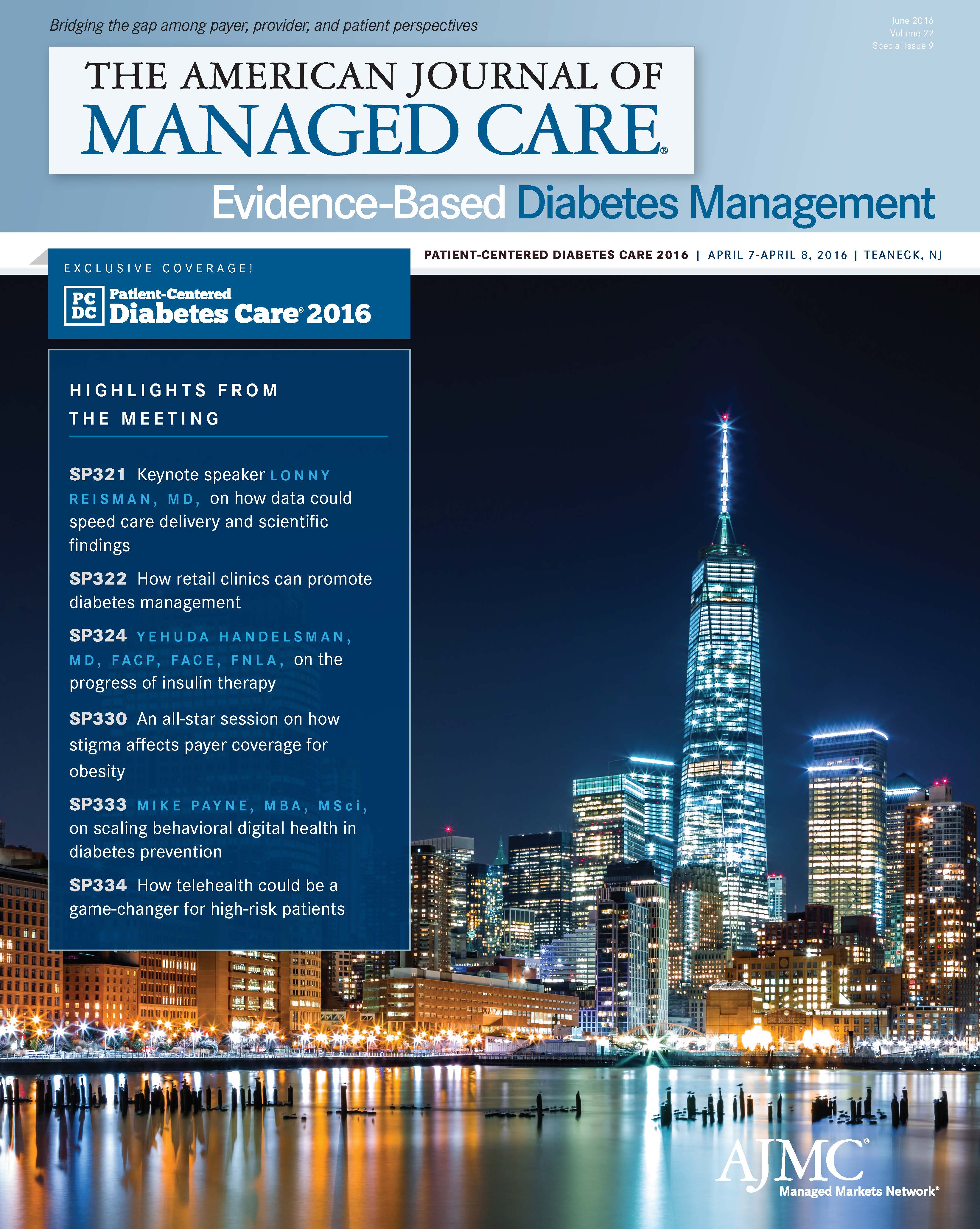Publication
Article
Evidence-Based Diabetes Management
The Importance of Translating Information for Informed Decision Making
Author(s):
Coverage from Patient-Centered Diabetes Care, April 7-8, 2016. Presented by The American Journal of Managed Care and Joslin Diabetes Center.
Definitions of collaborative care may differ among stakeholders, but all 4 panelists taking part in a discussion at Patient-Centered Diabetes Care on April 7, 2016, focused on improving communication among care providers and patients. According to Kristene Diggins, DNP, FAANP, MBA, manager of professional practice at MinuteClinic, an important part of collaborative care is translating information so that the patient can make informed decisions.
Heather Zacker, MD, director of international programs and operations at Joslin Diabetes Center, said there are 3 other specific aspects about collaborative care:
• It is critical to augment care wherever possible, in whatever location
• Providing information is not the same as communicating, which involves not only the patient’s commentary and behavior, but also his or her value system, cultural biases, and worldview
• This can happen only if the healthcare system has the right infrastructure and incentives to align these interactions.
Albert Tzeel, MD, MHSA, FAAPL, northern Florida regional medical director for senior products, Humana, explained the different models of paying for collaborative care and the recent shift toward value-based reimbursement. According to Tzeel, many markets are ready to accept full global risk; thus, it is important to ensure that they are successful both financially and in their ability to share data. He also referenced Humana’s current goal of incorporating physician feedback in order to make appropriate modifications.
Jeffrey Farber, MD, MBA, FACP, CPE, chief medical officer of Mount Sinai Care, described his organization’s unhappiness with the fee-for-service model and its excitement for the new value-based arrangements. With this movement toward valuebased payments, there will be more freedom for innovation in care models and the ability to provide what they think patients need most, he explained. Diggins said she would like to see employers play a greater role in incentivizing and motivating patients to see a provider. It is transparency of pricing and convenience, she said, that brings people back into care settings.
Diggins said she would like to see employers play a greater role in incentivizing and motivating patients to see a provider. It is transparency of pricing and convenience, she said, that brings people back into care settings.
The conversation then shifted to the effects of technology on healthcare and how it could connect all those who participate in the management of a patient’s diabetes. Diggins explained the importance of telehealth, especially in a convenient care setting where patients do not always have a provider who is readily accessible. She said some patients gave higher satisfaction ratings for telehealth than they did for a face-to-face encounter because they could suddenly hear how their heart sounds.
Farber discussed a new project from Mount Sinai, which is trying to recreate a hospital stay within the convenience of the home. The project includes coordinating technology, medical supplies, pharmacy, nursing, home care agencies, physical therapy, occupational therapy, social work, and care management staff for patients who struggle to leave home. Mount Sinai has even partnered with Google and Apple in order to develop apps and other devices to promote patient engagement. Joslin Diabetes Center also generated a new model of care called the Care Alliance Model, which has expanded its partnerships to include not only outpatient endocrinology spaces but also inpatient settings, primary care physician settings, and community settings.
“And so we’re starting to recognize…that diabetes is not something that only takes place once every 3 months at the endocrinologist’s office,” said Zacker. “It’s a 24/7 condition, and there are so many different components that need to work together.” However, Tzeel said that although technology can be extremely useful, it must be done well. There remain examples of low-tech, high-quality care: he discussed one of the management service organizations in Florida that uses only paper records, and it has outperformed others in its Health Examination Data and Information Set (HEDIS) results and Medicare Star ratings.
“They have a program from an access perspective,” said Tzeel. “They will see pretty much any one of their diabetics 7 days a week, pretty much any time, and they will communicate. They will tell them something. They will make sure they repeat it and understand it, and they’ll tell them what they said again and keep following up with them on a regular basis to ensure that it’s there. And they’re doing great.”
In a similar vein, Diggins described the “Ask Me 3” tool, where the patient must ask 3 very basic questions at the end of a meeting with the provider, such as: why did I come? Can I repeat back what was said? What are my actions going to be afterward?
Farber said that there has been tremendous opportunity to rethink value in healthcare as the people who pay for healthcare, largely employers, are done with a system that has failed for decades. “And when you talk about paying for collaborative care, that’s the beauty of it,” he said. “If there’s a good value proposition to whatever it is—a device, a technology, a service, a care team, a model—then there is a future for that and how to fund it.”
Zacker ended the discussion by saying that it will not be a wholesale transformation of the system, that the change to value-based care is and has to be gradual, which will allow everyone the time and opportunity to innovate, pilot, and invent in order to determine what does not work and what does.





